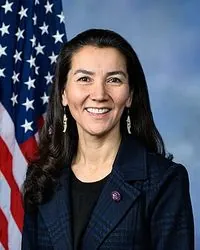Harvard's Black Student Enrollment Drops Post-Supreme Court Ruling
Harvard reports a decline in Black student enrollment for the class of 2028 following the Supreme Court's decision on race-conscious admissions. Other top universities show mixed diversity trends.

In the wake of the landmark Supreme Court ruling on race-conscious admissions 15 months ago, Harvard University has reported a significant shift in its incoming class demographics. The class of 2028, set to begin their studies at America's oldest institution of higher education next fall, shows a notable decrease in Black student representation.
According to data released by Harvard on September 11, 2024, the percentage of incoming students identifying as African American or Black has dropped from 18% last year to 14% this year. This decline aligns with predictions made during the high-profile lawsuit that challenged Harvard's admissions practices.
However, the picture is not uniformly bleak for diversity at Harvard. The percentage of Hispanic or Latino students saw a slight increase from 14% to 16%, while Asian student representation remained steady at 37%. It's worth noting that a significant number of students chose not to disclose their race, with 8% opting out compared to 4% in the previous year.

The impact of the Supreme Court's decision, which overturned decades of legal precedent, extends beyond Harvard. Other prestigious institutions have reported varied outcomes:
- The University of North Carolina at Chapel Hill, also involved in the Supreme Court case, saw a decrease in Black student enrollment from 10.5% to 7.8%.
- Columbia University experienced a significant drop in Black student representation from 20% to 12%, and a decrease in Hispanic students from 22% to 19%.
- Princeton University, Yale University, Williams College, the University of Virginia, and Duke University reported stable diversity levels.
- MIT and Amherst College both noted sharp declines in diversity.
"Our community excels when those with varied perspectives come together — inside and outside of the classroom — around a common challenge by seeing it through another's perspective."
Harvard emphasizes its ongoing commitment to diversity through race-neutral methods. These efforts include generous financial aid, with nearly a quarter of the incoming class attending without parental contribution, and extensive outreach programs targeting various communities, including historically Black colleges and universities.
The full impact of the Supreme Court ruling on higher education will take time to assess fully. Factors such as the recent issues with federal financial aid forms have also influenced college applications and enrollment decisions. As universities adapt to the new legal landscape, they continue to seek ways to maintain diverse and representative student bodies while complying with the court's decision.
The changing demographics at top universities reflect broader discussions about equity, access, and the role of race in American society. As institutions like Harvard navigate these challenges, the coming years will be crucial in shaping the future of diversity in higher education.


































